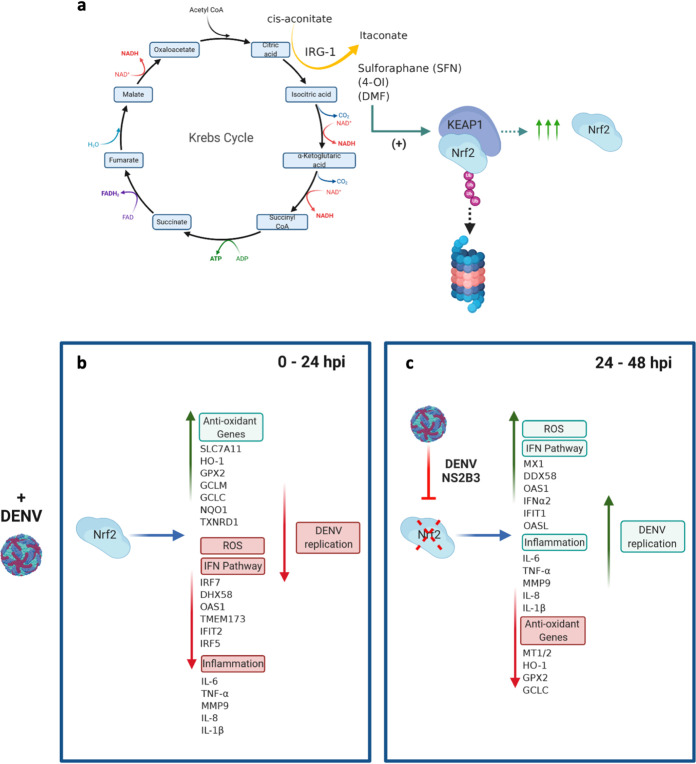FIG 8.
Nrf2 as a link between host metabolism and antiviral immunity. The Nrf2 transcription factor and the antioxidant network sit at the interface between metabolism and immunity. (a) Schematic of the tricarboxylic acid cycle (also called the Krebs cycle), illustrating the production of itaconate from cis-aconitate, mediated by Irg1. Increased itaconate production can also be mimicked by the isothiocyanate sulforaphane (SFN), the water-soluble compound 4-octyl itaconate (4-OI), or the FDA-approved compound dimethyl fumarate (DMF). Treatment with these compounds leads to the release of Nrf2 from KEAP1 and to Nrf2 stabilization, followed by transcriptional upregulation of the antioxidant gene network. (b) DENV infection likewise triggered Nrf2 release during the first 24 hpi; in turn, the Nrf2 response restricted the type I IFN response, decreased inflammatory gene transcription, and reduced ROS accumulation (34–37). (c) At later times after infection (24 to 48 hpi), the virally encoded NS2B3 protease complex inhibited Nrf2, resulting in decreased antioxidant gene expression, increased antiviral and inflammatory gene expression, and ROS accumulation, accompanied by increased dengue virus replication.

